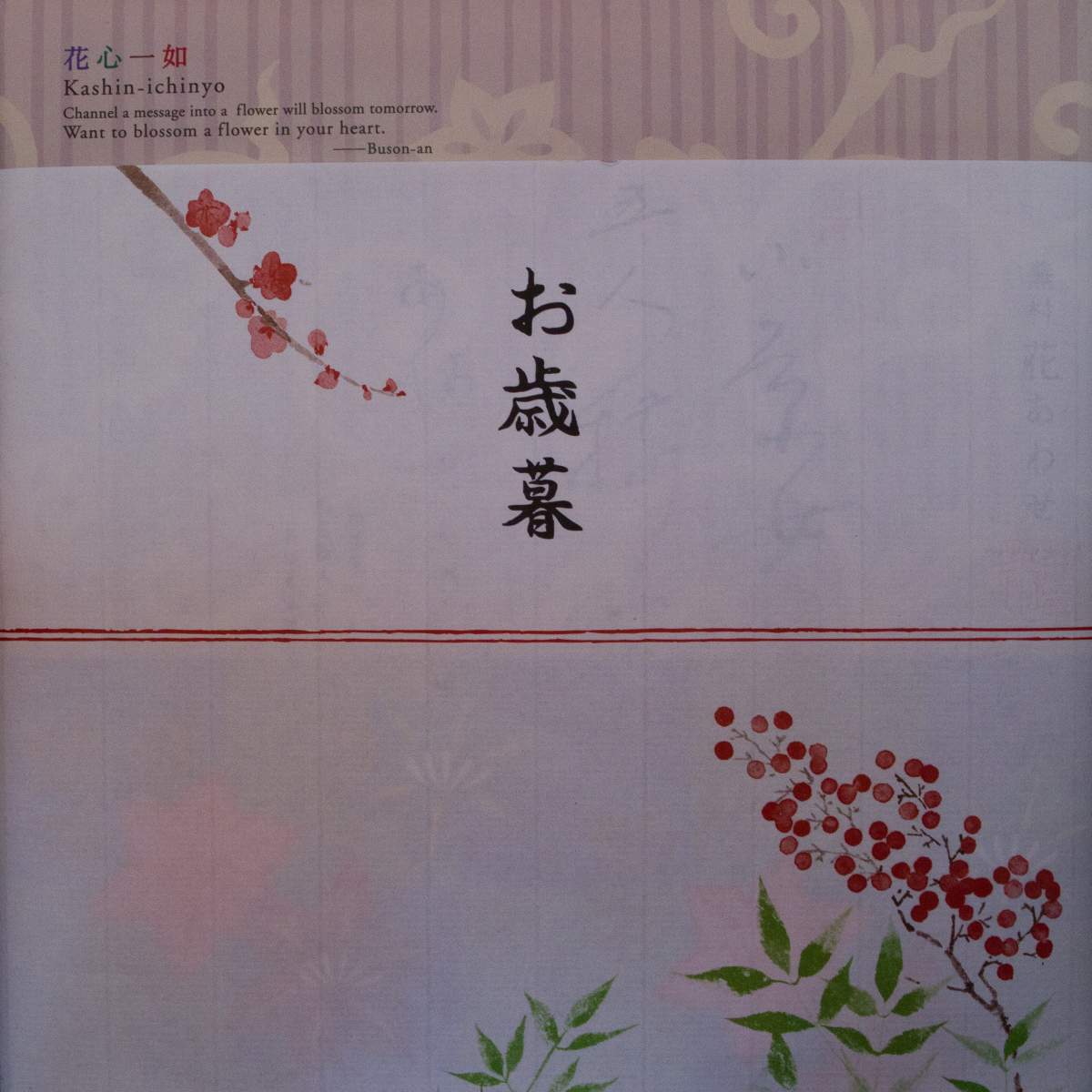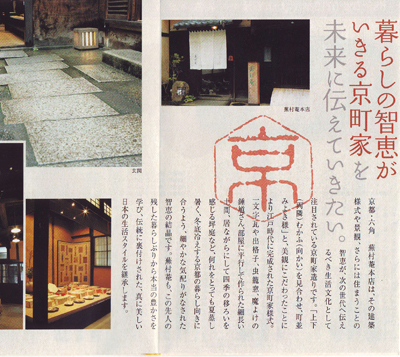Tempest in a Tin
My husband works closely with a man in Shin-Yokohama. When Kanda-san offered to send a year-end gift, my husband supplied him with our Berkeley home address. Kanda-san was puzzled. Shouldn't he send it to the company, which is in the Silicon Valley? My husband hadn't told him about me or my kanji addiction, so he couldn't very well explain that I would want to photograph every inch of the box once it arrived.
He was right; I wanted that very much. But when I tried, all the photos came out blurry. For some reason, I can never get good results when I take close-ups of kanji. Fortunately, I knew a professional photographer who could, so I contacted her and said I was having a photo emergency involving kanji. I told her I had to take photos of kanji immediately and hand off a box by the next day. She thought I was talking about Kanji, my beagle mix, so our conversation initially went in a strange direction. But we soon sorted things out, and she rushed to my office for a photo shoot of a box (not a dog).
Dorothy did a fabulous job of capturing the beautiful wrapping paper on the tin. Here's one picture (and you'll see others as they make their way into essays):

Photo Credit: Dorothy Brown
The large kanji are 歳暮 (せいぼ: year-end gift), breaking down as
year + end, sunset.
She also showed me that my camera was just as inadequate as I'd suspected for close-ups of kanji. (Whew! I'd rather have the deficiency be in the camera, not in me!)
Before leaving, she asked if I wanted to unseal the tin, just in case something with kanji lay inside. I didn't dare; the gift wasn't mine to open. Anyway, if there were an insert, it would most likely be in 4-point type and therefore useless to me.
I released the tin to my husband, and when he came home that evening, he reported that the Asian members of his team had devoured its contents (rice cookies called 煎餅, せんべい). He also presented me with some pieces of paper—the inserts from the tin. They contained large, gorgeous kanji, and one character in particular leaped off the page: 恵. No! Now I had a new crisis!
Joy o' Kanji would launch the next morning, and I thought the PDF of essay 1196 on 恵 was posted and ready to go. (I've only just realized that that's not the case; it isn't scheduled to post until February!!!) Whenever I come across a decent kanji photo, I feel an uncontrollable urge to use it in my essays. But if I've already completed an essay, that's no small task. I haven't mastered InDesign (the software with which my graphic designer makes PDFs), so in order to add a photo to a finished essay, I need to send it off to her in Indonesia, then await the update. The whole process takes time. What could I do about this new 恵 photo???
I do realize that, in the grand scheme of life and all of the problems one might experience, my photo crises may seem quite small. However, when it comes to kanji, I lost all perspective long ago!
I'll certainly add the scan of the insert to essay 1196, but I wanted to share that gorgeous kanji with you now.

As you can see, 恵 is the last kanji in the right-hand column. It's part of 智恵 (ちえ: wisdom). Essay 1196 presents this word, but there it's written as 知恵. Whereas 知 is in the Joyo set, 智 (intellect, reason, wisdom) is non-Joyo, though it differs from 知 by only a 日. I consulted my proofreader, who said there's no reason to use 智恵 over 知恵 except to grab people's attention with something a little different.
The first word in the right-hand column is 暮らし (くらし: living, livelihood). The kanji 暮 appeared in the first image (where it meant "end, sunset"), and 暮らし pops up several times in essay 1552 on 沢, coming up on January 13. More and more coincidences!
The second column from the right begins with いきる (living), a verb functioning as an adjective here. After that comes 京町家 (きょうまちや), a word that puzzled me. Such simple kanji, but what do they mean collectively? My proofreader filled me in: 京町家 refers to the old wooden Kyoto buildings known as 町家. I adore traditional Japanese architecture just about as much as I love kanji, and when I read the Wikipedia page about these buildings, my heart began beating harder. I've adored these buildings for ages, but I've never known what to call them. Now I do! This food insert certainly unlocked a door!
In the third column from the right, the large gray text contains these words:
未来 (みらい: the future (usually distant))
伝える (つたえる: to hand down (to younger generations, etc.))
Then comes いきたい, and although it sounds like "I want to go," that's not its function here. Rather, this is an auxiliary verb indicating that something takes you from where you are now to some point in the distance (spatially or temporally).
Putting it all together, one finds this: "We want to hand down 京町家, in which the wisdom of living is alive, to future (generations))." A little awkward, but that's the gist of it.
There's a big red 京 on the page, standing for 京都 (きょうと). And what about all the small type in columns? Oh, dear. There's quite a lot, isn't there?! Apparently that text says more about what the 京町家 style is and how the shop selling rice cookies is built in that traditional way. But let's not worry about it. Just look at the pretty pictures and enjoy the holidays! Bye till January!

Comments